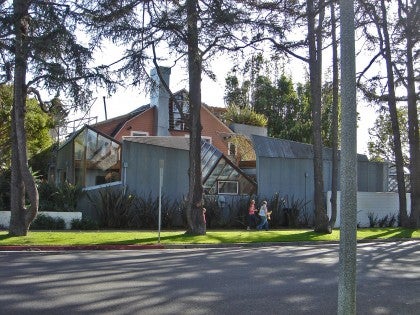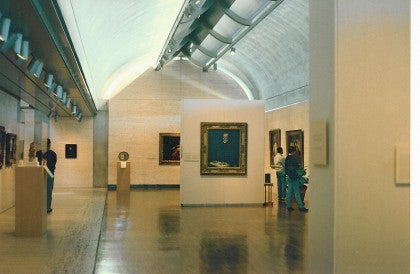Reflecting on the past two winners of the AIA Twenty-five Year Award, I am moved to ask what this award says about our values as architects. This is supposed to be the quintessential award that says a building is cool and has stood the test of time as an embodiment of architectural excellence. The winner must demonstrate excellence “in function, in execution of original program, and in creativity of statement by today’s standards.”
Frank Gehry Residence
If we look at the Frank Gehry Residence, the 2012 award winner, I’d say what we really value as architects is novelty, weirdness, and idiosyncrasy. Gehry’s house is amazing when it comes to these values. But is this the core heart and soul of what we’re about? It is also a single-family home for the architect himself? Is this what is really valuable about architecture—our own self-indulgence? This is not a house that even 1 percent of the populace would relate to or understand.

John Hancock Tower
The John Hancock Tower, the 2011 winner, is a beautiful building. But this is also the building where all the glass fell out. Excavation problems undermined the foundation of neighboring Trinity Church, requiring a huge restoration. The John Hancock Building, in its totality, does not demonstrate excellence. It had some real problems! Furthermore, the resolution was sealed by the courts; as a profession we are left with major questions and bad memories.

I’m a real architecture junkie; I travel a lot to see buildings. I am constantly dismayed by disappointing failures of buildings that the media has hyped. It crushes me–hurts me to the core of my being–to find that what has been called great architecture has feet of clay.
Other buildings I visit and find amazing! They’re supporting a beautiful life, are beloved in their communities, and are making a palpable contribution to the world. I recently talked with a woman who had visited the Kimbell Art Museum with a fellow she had just begun to date. The experience of being at the Kimbell bumped their romance to another level. It illuminated a connection of their souls! This building got the Twenty-five Year Award, and it deserved it.

I believe submissions to this program need to articulate the contribution the building has made over 25 years. How has it enhanced the community, or become a beloved icon? How has it provoked a redevelopment in its neighborhood? How is it sustainable? We profess these as values and say that the 25-year Award must live up to “today’s standards.” Are these really standards we believe in?
There is a difference between a building that makes a huge contribution and one that’s interesting to the architectural subculture. We, as architects, need to talk about this.
Thought-provoking, thought-full and opening a discussion I will be interested to follow. It often happens that when we non-architects say, “The Emperor is naked!”…we’re excused because we don’t “get it.” Having sat in as an observer on a number of Design Awards jurying, I’ve noted with interest that a design that is eliminated in the first pass one year has been known to come back another year and receive an award from a different jury. And so it seems that even some design pros don’t “get” everything.
A timely invitation to dialogue, Larry, about the core values of this marvelous profession of Architecture. I hope that this essential consideration is going on throughout the profession. It requires courage. It needs wisdom.
Gratefully,
Sharon Rue
I was particularly moved by your “feet of clay” statement because it harks to Daniel 2:33. In this portion of Scripture Daniel warns the self indulgent, hubristic King by describing an idol whose upper body is made of glamorous bronze and other metals. But at the feet, reflecting the kings fatal position, the idols feet are baked clay. I see a similar story playing out vis-a-vis the values society at large idolizes in architecture and elsewhere.